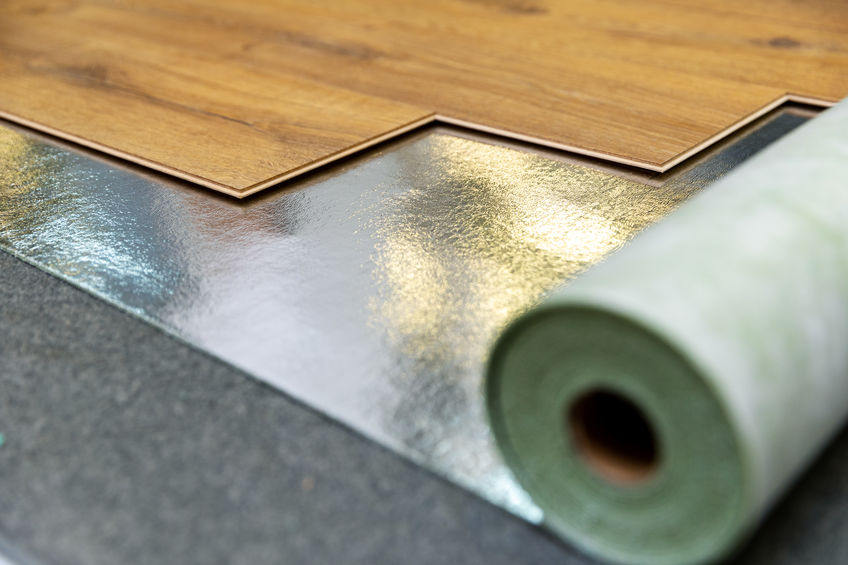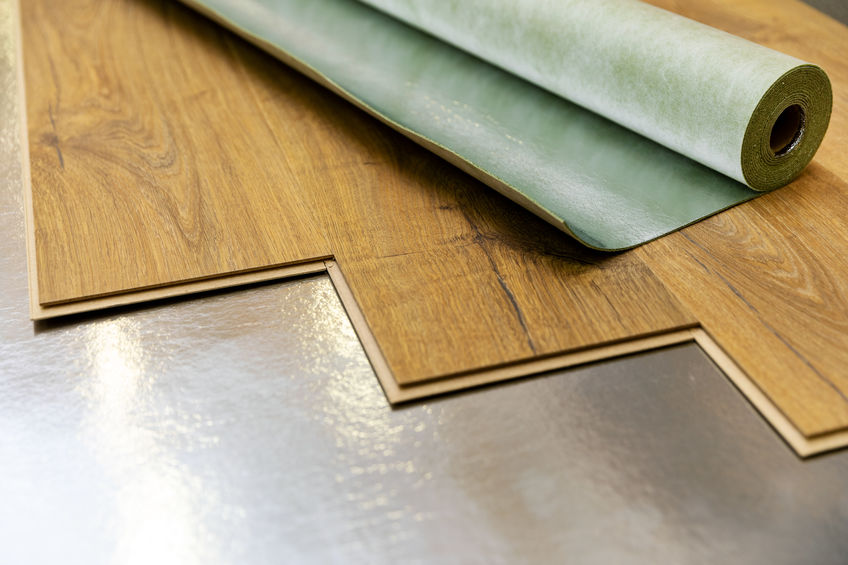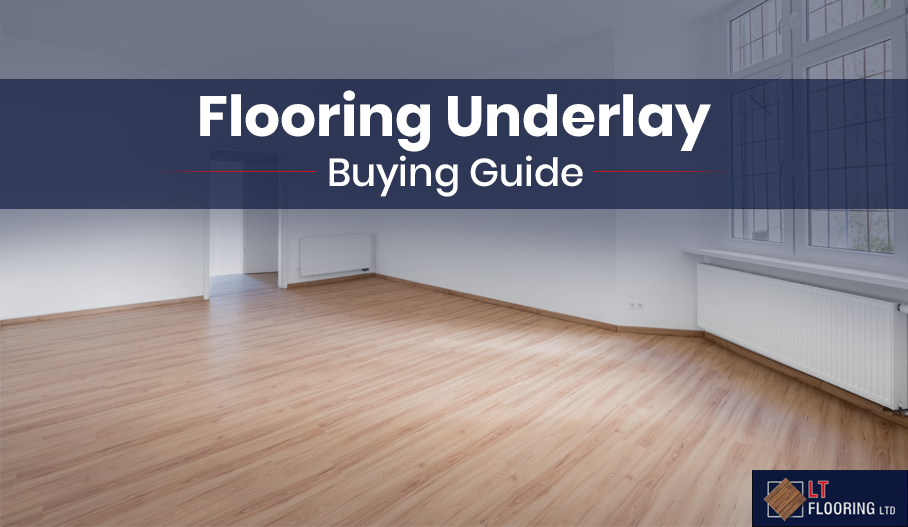Underlay is the rubber or foam layer that goes underneath your flooring. It helps to protect your floor in a variety of ways. Do you need an underlay for carpet? For the majority of secondary-backed, jute-backed or action-backed carpets, yes you will. If you’re thinking of getting any new type of flooring, laminate, luxury vinyl tile, or wood flooring, it’s a good idea to look into the best type of underlay first. Nearly all kinds of flooring are intended to have underlay underneath, and different types go with different flooring, depending on several factors. Taking into account the type of flooring, room and desired functions, find out which is the best carpet underlay for you.
Why You Need Underlay
Underlay is necessary for a range of different floorings such as carpet, luxury vinyl tile, laminate flooring or engineered wood flooring. It makes a big difference to both the look and feel of your floor. It helps reduce wear and tear and therefore improves the longevity of your flooring. Underlay is essentially an extra cushioned layer which not only adds comfort but works as a shock absorber. This both protects and shields your floor. The added layer makes the flooring more comfortable to walk over or sit on as well. Underlay is also an effective sound-proofing material. The insulation helps to block the sound from below. This is particularly useful for upstairs rooms or flats. The insulation underlay keeps in the heat, which not only makes it an eco-friendly option, but you will also save a great deal on your gas bill, by reducing your heating costs. Good quality insulation is one of the best ways to stay sustainable this year.
Different Types of Underlay

This is where you need to think about which type of underlay is right for your flooring. You also need to take into consideration the room it’s going into. There are several types of carpet underlay. For carpet, underlay functions as a protective shock absorber, allowing your carpet to bounce back and last longer. Your carpet will stay fresh much longer, even after all the trampling it’s had to endure. The underlay helps to maintain the original condition of the pile, and you’ll notice the difference. Underlay can be made from a variety of materials for different purposes. Here are the main types of carpet underlay.
Polyurethane
This type of underlay is made from recycled foam or offcuts in a range of thicknesses and densities. This means it can be adapted to most budgets, as well as types of flooring, and is a good general use option. As it’s made from recycled materials it’s also an eco-friendly example, so a good one to go for if you’re keen to save money and reduce your carbon footprint. The only thing you might want to consider is that cheaper underlay probably won’t last as long as higher quality material.
Sponge Rubber
This synthetic rubber underlay is better for a more luxurious effect. It varies in thickness as well and can be used almost anywhere in your home. It provides an added level of comfort and there is even a super thick option, perhaps for your living room or main bedroom. The thickness and quality of the material will definitely increase the longevity of the flooring and last the whole lifespan of your carpet.
Crumb Rubber
Crumb rubber underlay is incredibly durable. Its high density makes it great for parts of the house where people walk a lot, like the stairs or the hall, as it will easily withstand this traffic. It’s also able to support heavier furniture.
Felt and Crumb Rubber Combo
This great all-purpose combo combines comfort and resilience for excellent insulation. It will keep heat in and noise out. The two materials complement each other to provide a fully comprehensive underlay.
Types of Hard Floor Underlay

Hard floor types such as laminate, luxury vinyl tile, and wood are better suited to different kinds of underlay. This is necessary for the added support for the joints in planks and tiles, to reduce the risk of these bending out of shape. There are several types of hard floor underlay, made from a variety of materials for different purposes.
Luxury Vinyl Tile
This underlay is made from a denser type of rubber and is best used with luxury vinyl tile flooring. It has a gummy top to keep the tiles from sticking during installation. It goes well with underfloor heating and provides good soundproofing. The noise level in the room should be reduced by about 30%.
Strepshield
Another effective sound insulator, strepshield is a type of foam underlay, suitable for laminate or wood flooring. Its main benefits are that it’s suitable for general-purpose domestic use and easy to install. Strepshield will also help to hide bumps and blemishes of up to 1.5mm and small irregularities in the flooring. This is good if you have slightly uneven flooring or other tiny imperfections.
Timbersafe
Timbersafe underlay is widely used with wood flooring and laminate. It is primarily made of rubber but has its own fleece lining on one side. It’s particularly dense and the synthetic rubber it’s made from with the fleece backing provides excellent insulation. It’s resistant and durable so good for heavy use. It can withstand a lot of weight for example from furniture or footage. The synthetic material is resistant to compression so it can cope with heavier items and will protect the floor for much longer.
Low Thermal Resistance
With underfloor heating, the best carpet underlay is a thermal underlay. This is due to the fact that the low density allows heat to pass through from underneath. Thermal underlay also has a low tog rating. This combination will save energy consumption and therefore be better for the environment and your bills. It’s a more sustainable option if you have underfloor heating. There are different types for both carpet and wood flooring. Low thermal resistance underlay also works great at soundproofing. Thermal underlay is generally recommended with any underfloor heating system.
What is a tog rating?
The tog rating is a term of measurement you might have heard when buying either bedding or flooring. It refers to the thickness and weight of the material. Regarding underlay, the density, thickness, and composition vary and these all contribute to its tog rating. Its level of heat insulation is also a factor. This will help you understand which type of underlay is more compatible with your floor. You don’t want to combine something with a high insulation factor with underfloor heating for example, so it’s important to know what will go best with your type of flooring. With underfloor heating, a lower tog rating is more suitable because this means it doesn’t provide as high insulation and will allow heat to pass through from the floor. Look for a maximum of a 2.5 tog rating, if you have underfloor heating and especially if your floors are carpeted as well. An underlay with a higher tog rating than this will provide too much insulation, but if this is what’s best for your floor type, and with standard heating, this can also be desirable.
Carpet Underlay Thickness
Again there is a variation in thickness depending on the material of the underlay. Foam underlay is typically between 7 and 12mm thick. The thicker the underlay, the better the quality. 7mm underlay is more of a budget option if you’re looking to cut costs, but it won’t last as long. Between 8 and 12mm you’re more likely to get the lifespan to match your carpet. One thing to consider when installing thicker underlay is the added height of the flooring. You might need to adjust your doors a little higher, to allow them to pass over the flooring without scraping. A thicker underlay will provide both heat and sound insulation however and it will protect the flooring as a buffer.
Do I need to replace carpet underlay?
The standard lifespan of quality underlay should be the same as your carpet if you’ve made the right investment. This means that if you go for a higher quality underlay you’ll be looking at a 25year lifespan. It’s worth going for as you will need to replace your underlay with your carpet anyway unless it’s exceptionally durable. There are ways you can prolong the lifespan of your flooring and underlay. Try to avoid it getting wet and clean up any spillages. This will prevent mould or dampness from developing. Go for thicker and denser underlay in the busiest parts of the house, or underneath a lot of heavy furniture. A stronger underlay will be able to handle more weight. Lower quality underlay might not last as long as your carpet and there are some tell-tale signs it needs replacing. Look out for uneven bumps and marks. Is the carpet getting progressively worn out? If the carpet feels flatter than it used to then the underlay is probably worn as well, and it might be time to replace it.

